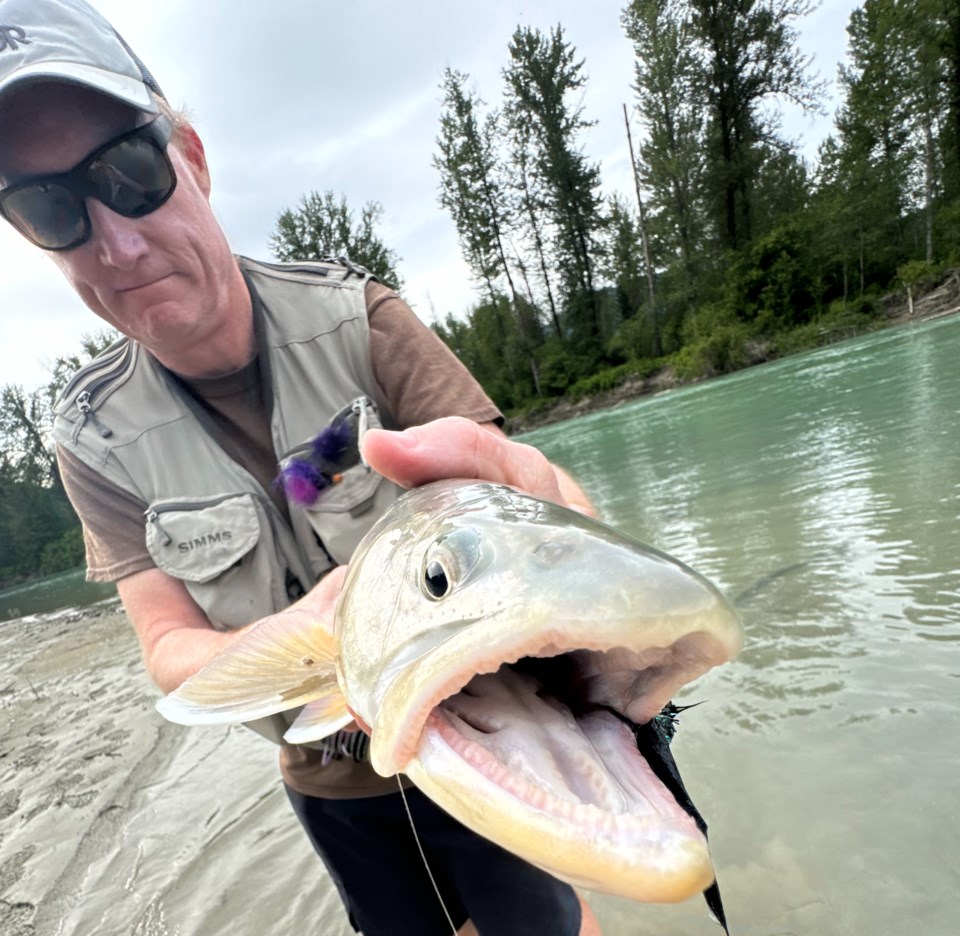While Whistler’s forests and mountains are occupied by incredible ecosystems comprising all walks of life, I think there is something to be said about its aquatic biomes and the species that call them home. There may not be as much species diversity under the water as there is above it, but the subaqueous organisms that are present deserve much more love, in my opinion.
I can’t think of a species more representative of this than the apex piscine predator in our lakes and rivers: the bull trout (Salvelinus confluentus). Native from Oregon and Idaho all the way up to the Yukon, these fish are often overlooked by naturalists but serve as a vital native species in our waters. Reaching more than 60 centimetres and 10 kilograms on occasion with jaws to match, they are happy to chow down on just about anything they can fit in their mouth.
If you have never seen or heard of bull trout before, you are not alone. Bulls like to spend most of their lives in deep, cool water. This usually takes the form of large pools in rivers or well below the surface in higher-elevation lakes. There also wasn’t a large historical fishery for them, especially when compared to their salmon and trout cousins who remain a large portion of the PNW industry and image. The latter are much more opportunistic in their feeding preferences and living conditions, which, when combined with a 200-plus year history of being captive bred and stocked in water bodies all over North America, results in them often dominating lesser well known species like bulls.
Such factors, as well as habitat destruction and global warming, have pushed the bull trout to be classified as “vulnerable” under the IUCN Red List, with ongoing conservation efforts throughout its native range. The next time you are out exploring, make sure to be on the lookout for signs designating water bodies as bull trout water, especially smaller headwater streams and lake inflows.
If you see or catch a fish that may be a bull trout (catch-and-release only), there are a few key diagnostics to look for. They can be pretty easily distinguished from kokanee and rainbow trout with their large mouths extending past the eye, small orange-brown spots, and bright white leading edges on their ventral fins.
During the late summer and early fall, as they move into shallower sections to spawn, you may catch a glimpse of these beasts. Be on the lookout for their large, green bodies that often come with an extra gnarly kype and bright orange belly as they get ready to breed. Make sure to keep your dogs away from these spawning grounds this time of year and give the bull trout the space they need to dig their redds.
As we enter the prime of summer and eventually to the bull trout spawning season, let’s be extra mindful of these incredible creatures when we are enjoying Whistler’s breathtaking lakes and rivers. With your help, these incredible fish can hopefully return to their former numbers and thrive in these ecosystems we care so much for.
Naturespeak is prepared by the Whistler Naturalists. To learn more about Whistler's natural world, go to whistlernaturalists.ca.




